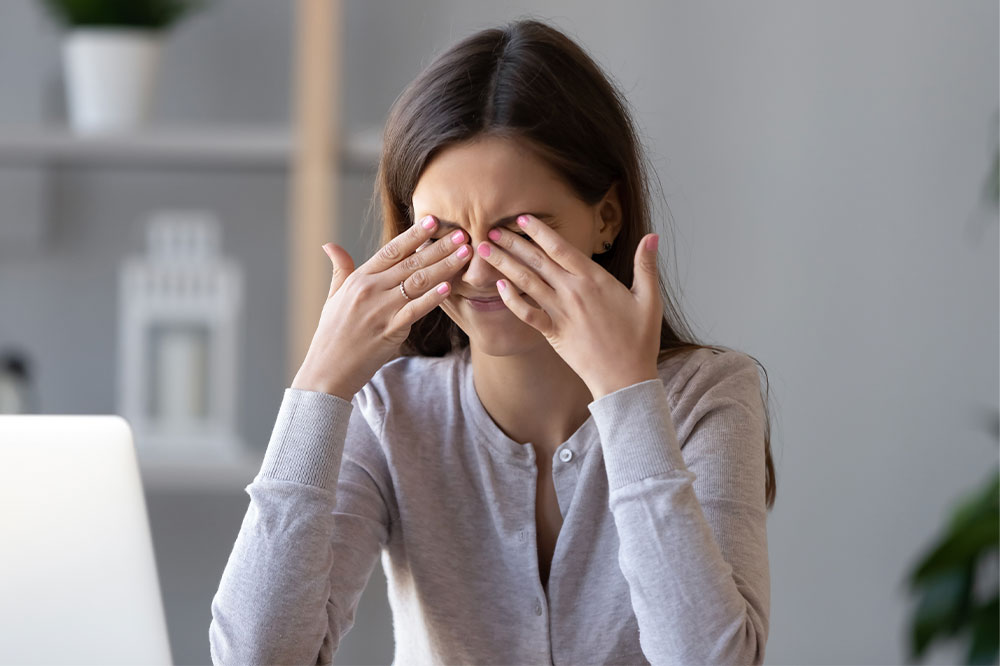Understanding Dry Eye Syndrome and Its Management Options

While humans express various emotions by crying, tears serve some functions beyond this expression. While tears are the body’s response to pain, their main purpose is to lubricate the eyes. Tears coat the surface of the eyes and prevent dryness. As the eye surface does not have any blood vessels, tears help transport the oxygen and nutrients for the surface cells. The moisture also gets rid of irritants or foreign particles that enter the eyes.
How are tears produced?
The eyes have two lacrimal glands, one above each eyeball towards the outer part of the eyelid. These glands secrete a clear fluid, i.e., tears, that lubricates and cleans the eyelid’s surface. Though their main function is lubrication, they protect the eyes from infection. Tears are made up of proteins, electrolytes, and vitamins crucial for maintaining eye surface health. When lacrimal glands produce insufficient tears or those of poor consistency or quality, one experiences dry eyes.
What is dry eye syndrome?
Dry eye is a common condition that affects up to 15% of the population in the country. The condition develops when the eyes do not produce enough tears for lubrication or when the tears have the wrong consistency, making the tears evaporate quickly. This absence and inadequacy of tears can result in significant eye discomfort. All these factors contribute to the lack of moisture, i.e., dry eyes.
Types
Doctors classify dry eye syndrome into the following two types:
Aqueous tear-deficient dry eye: This develops when the lacrimal glands do not secrete enough tears to moisten the eye surface.
Evaporative dry eye: This condition develops when the meibomian glands in the eyelid get inflamed. These are oil glands along the edge of the eyelid, close to the eyelashes. The oil from the meibomian glands is an important component of tears as it helps slow down the evaporation of tears and keep them stable. If the meibomian glands get inflamed, it interferes with oil production, causing quick evaporation of the tears and dry eye syndrome.
Symptoms
People with dry eye syndrome can experience one or more of the following symptoms in their eyes: Pain, redness on the eye surface, stinging or burning sensation, a sensation of having something stuck in one’s eyes, episodes of dry eyes and excessive tearing-up, blurred vision, inability to cry when emotional or in pain, and eye fatigue. One may also be unable to read a book or work on the computer for a long time.
Causes
Dry eye syndrome can be triggered as a side effect of prescription treatments like antihistamines, tranquilizers, blood pressure treatments, antidepressants, and nasal decongestants, among others. Other risk factors include pregnancy, hormone replacement therapy, refractive surgery called LASIK, skin disease near the eyelids, meibomian gland dysfunction, inflammation of the conjunctiva, exposure to chemicals, and exposure to drafts from air conditioners or heaters. Further, scarring in the eye, excessive screen exposure without blinking, long-term contact lens use, allergies, cosmetic surgery, keratitis, and immune system diseases like lupus, rheumatoid arthritis, and Sjogren’s Syndrome can increase the risk of developing dry eyes.
Treatment
As multiple factors could increase the risk of developing dry eyes, doctors first ascertain the exact cause and then develop a treatment plan. Dry eye syndrome treatment helps restore the adequate amount of tears and maintain them to prevent further damage to the eye or vision. The following are the common treatment options for the condition:
Non-prescription options: Many approved artificial tearing solutions are sold at pharmacies. These products can supplement tear production. One can consider additional treatment if these products do not help improve the dry eye symptoms.
Prescription treatment: Doctors prescribe anti-inflammatory options as these are approved treatment methods for dry eye. Prescription treatment can increase tear production and reduce damage to the cornea, thereby reducing the symptoms of dry eye. As this is a persistent condition, one may have to use the anti-inflammatory treatment twice daily for 3–6 months for long-term relief. If one experiences severe dry eye symptoms, doctors may prescribe eye drops, which can reduce inflammation. Doctors simultaneously treat the underlying cause of dry eye. For example, if one’s allergies are causing dry eyes, doctors will prescribe anti-allergy treatment. If the use of contact lenses is causing dry eyes, doctors may recommend a new type of contact lens or advise against using any lenses till the symptoms improve.
Eye inserts: If one’s symptoms are mild or moderate and ointment or eyedrops are not helping them, doctors may use a tiny insert that looks like a rice grain made of cellulose and place it between the lower eyelid and eyeball. The insert, containing substances found in artificial eye drops, begins to dissolve and release the substances that help lubricate the eyes.
Lacrimal plugs: The eyes have small circle-shaped openings at the inner corner of the eyelids, through which tears escape from the eye into the nose. Doctors insert tiny silicon or collagen plugs, called lacrimal or punctal plugs, that block the opening, allowing the tears to stay on the eye’s surface. This procedure is painless and can be done at the doctor’s office. Once the symptoms improve, doctors can remove the plugs. Doctors may permanently insert plugs for those with severe symptoms if other treatment methods are ineffective.
Punctal cautery: This is a simple surgery carried out to permanently close the tear ducts, enabling a limited volume of tears to stay on the eye surface.
Other options: Doctors may recommend ointments or eye drops to reduce inflammation, along with prescription treatment and simple surgical procedures. Patients may also be advised to use warm and cold compresses on the eye to reduce inflammation, which can help improve symptoms. Doctors may also recommend vitamin A and B12 supplements that may help enhance tear production.






